Table of contents
Have you ever heard of interlocked flooring? The name is somewhat self-explanatory, and has been increasingly cited in architectural, urban planning, and engineering projects that offer ecological, sustainable, and low-cost resources to clients who seek practicality and economy in their construction projects.
"The interlocked floors are pre-molded concrete pieces, found in the market in several shapes and colors. They get this name because they are placed in a way that the pieces lock together", explains the architect Edilaine Ferreira. It is a very efficient way to create a non-slip and safe area for the passage of pedestrians and vehicles, and are used not only in external areas of houses, but alsoalso in squares, sidewalks, parking lots, and public roads.
Some flooring models offer a sustainable result to the project, since the pieces are usually permeable, allowing the soil to be moistened or warmed by the action of time or manual irrigation. Clear pieces increase sunlight reflection by up to 30%, thus contributing to energy savings.can be placed and removed without the need for a major overhaul.
Types of interlocking floors
There are a few different types of interlocked floor models available in the market, to enable the visual effects desired by the user. Check out the most common ones:
See_also: How to stop termites with simple, home-made methods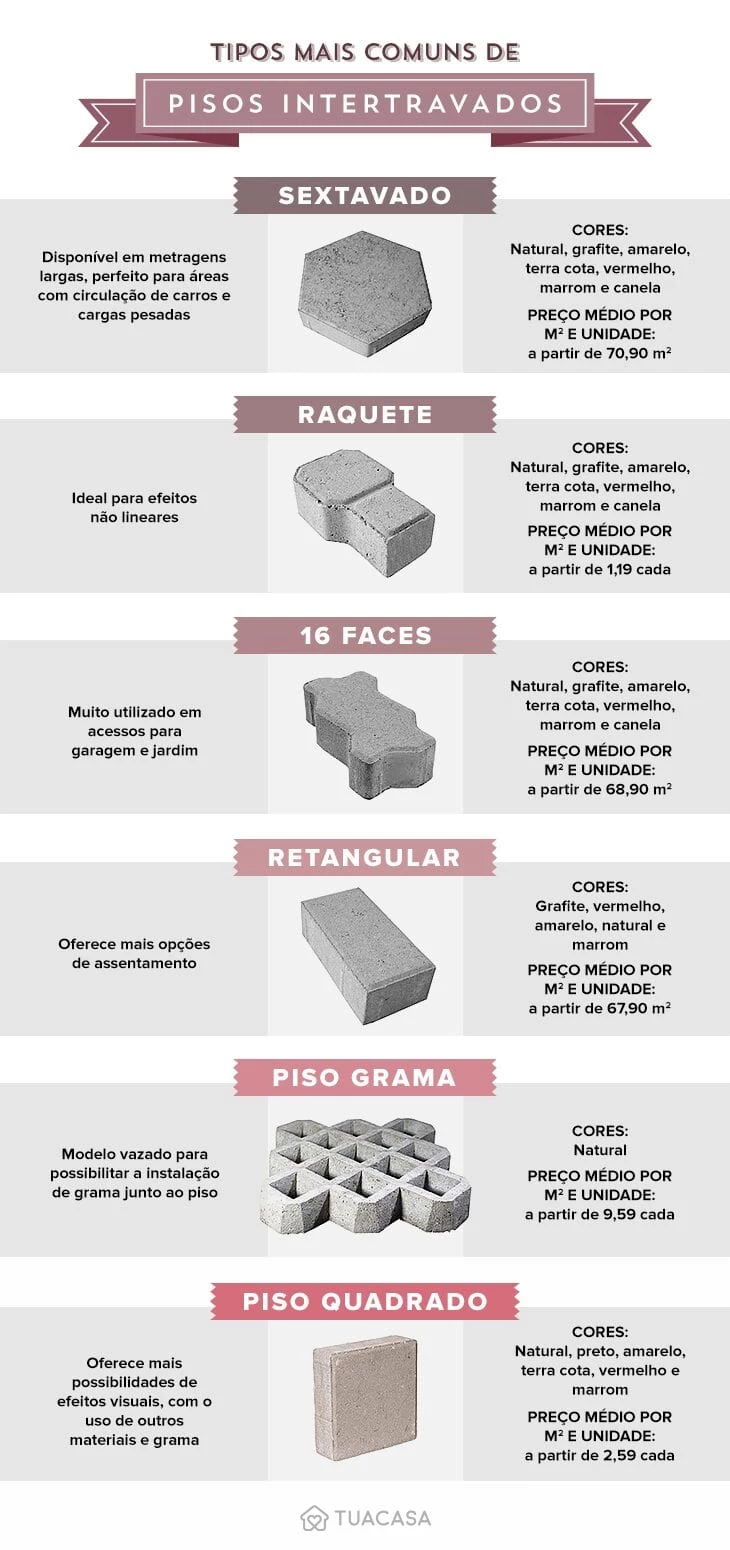
How to do the installation?
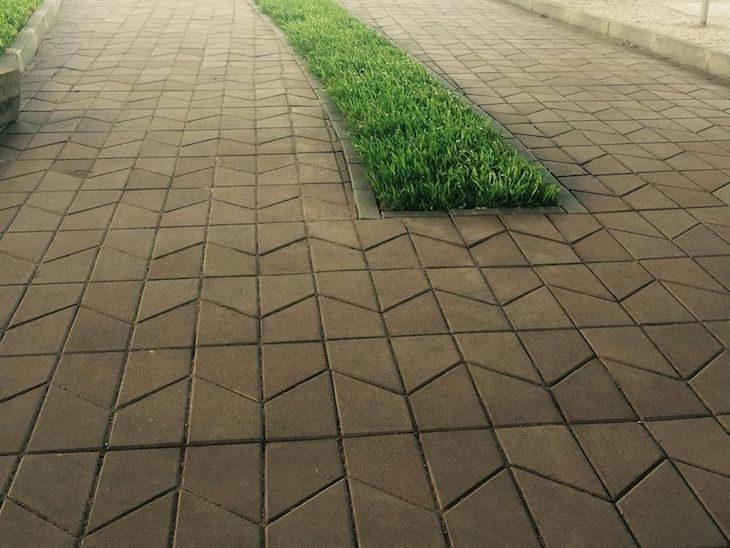
"The installation of this floor is simple: first, it is necessary to level the ground, then compact it with coarse sand, then the concrete pieces are placed in a way that they lock together and are joined by fine sand, and for the final compacting, a vibration plate is used so that all the joints are well filled with sand", explains the architect.
Advantages and disadvantages
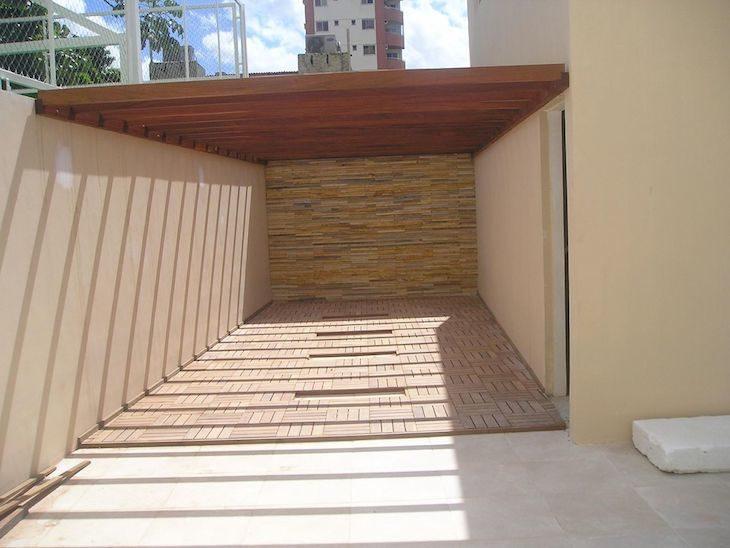
According to Edilaine, the main disadvantage of this type of flooring is the execution time, since the pieces are fitted by hand and require more time for execution. Consequently, the cost of labor is high. However, the advantages are much greater, and the main ones have been listed below by the professional:
- Practicality: The parts can easily be put on and taken off, as they are fitted next to each other.
- Economics: With the possibility of reusing the concrete pieces, this type of flooring becomes more economical and sustainable.
- Permeability: There are concrete floor models that are permeable, i.e., part of the rainwater is absorbed by the ground.
- Resistance: This type of flooring can withstand the passage of both pedestrians and heavy vehicles.
Safety-conscious product

Its concrete confection guarantees greater safety in the external area of the house, due to its non-slip action. This is why this material is installed especially in garages, sidewalks, driveways, near swimming pools, and other areas that are commonly wet by the weather or irrigation, thus avoiding accidents with pedestrians or the jamming and skidding of vehicles.
Maintenance and care
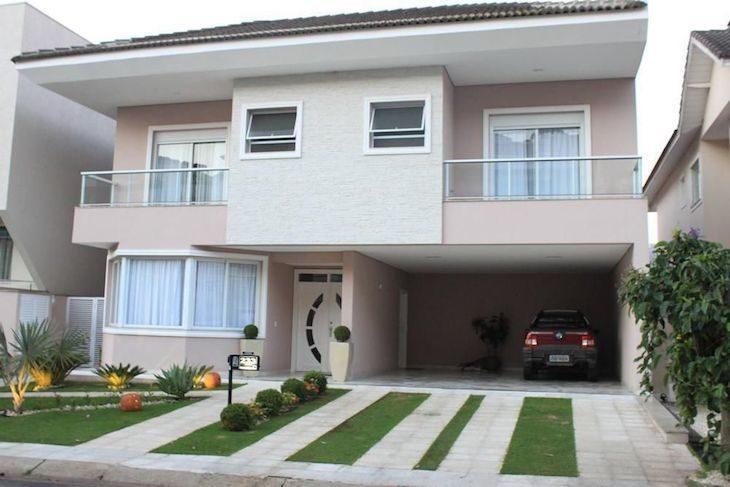
"It is important to be careful when cleaning this type of floor. It is usually done with hydroblasting machines, but if you use a jet that is too strong it can wear away the grout and displace the blocks over time," concludes the professional.
35 projects that use interlocked flooring:
Get inspired by some fantastic projects that have guaranteed the best effects with interlocked floors:
1. two models, two colors
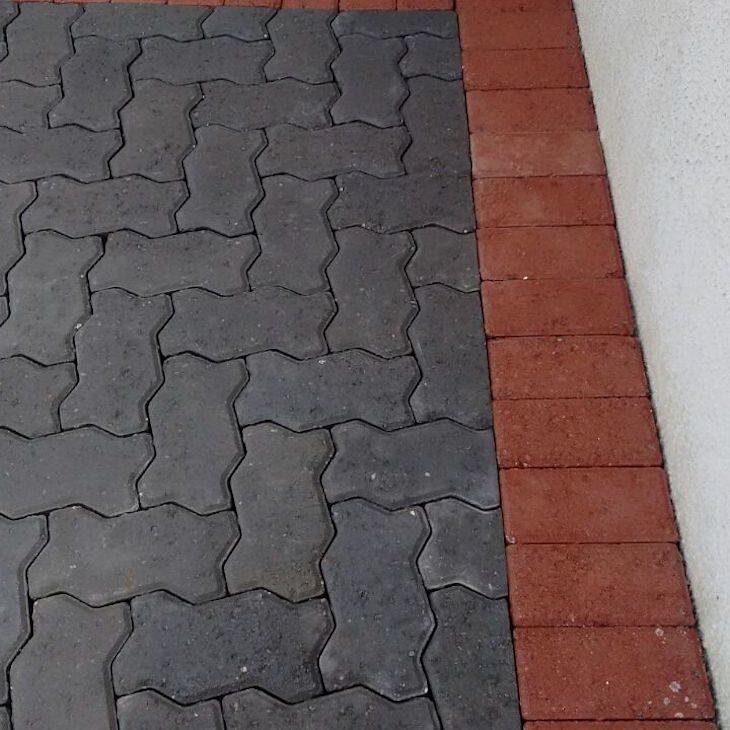
For a differentiated visual effect, two types of flooring were used in the area: the 16-sided natural color flooring in the middle, and the rectangular red flooring creating a simple frame on the floor.
2. handcrafted flooring for the internal area
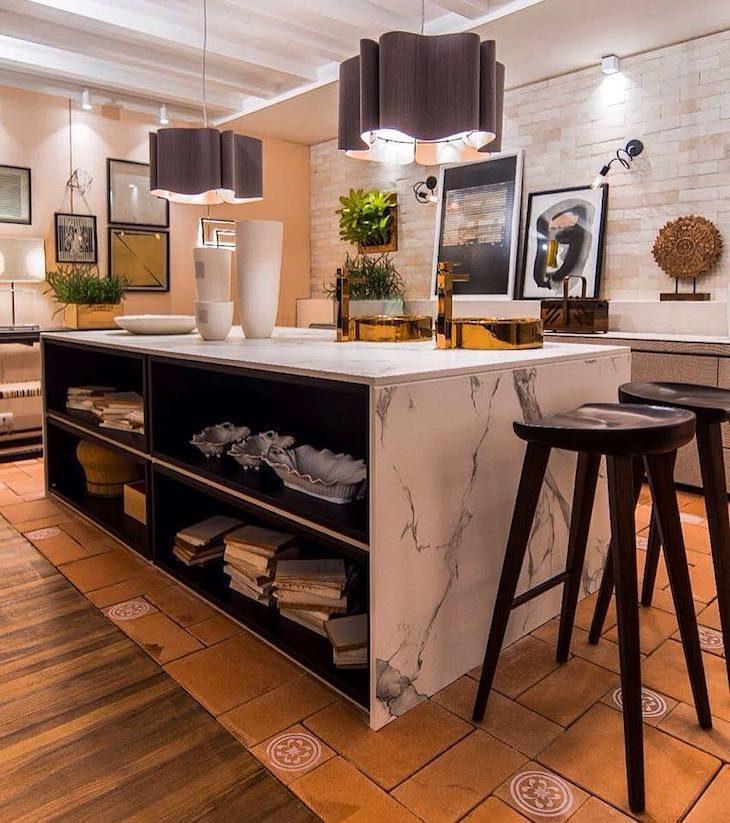
This kitchen was given a modern decoration with a rustic touch, and for this proposal, the rectangular interlocked floor created a limitation line between the wet area and the rest of the environment.
3. increased security in the leisure area

This lawn was given a few meters of interlocked flooring of a more refined material to ensure the safety of the pool users. Both the resting area (where the sun loungers are) and the path to the interior of the property received the technique.
4. interlocking floor + grass
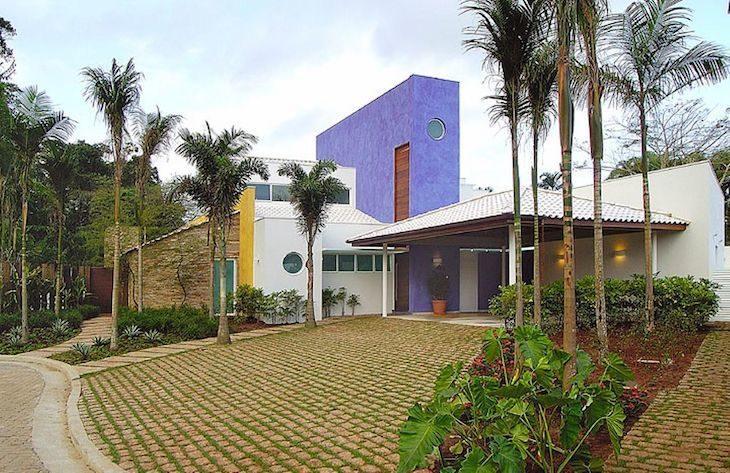
With the installation of the interlocked floor in the middle of the grass, cars will now be able to park in the front area of this house without damaging the ground, especially on rainy days.
See_also: 50 models that prove the versatility of porcelain tiles for the living room5. covered outdoor area with a rudimentary touch
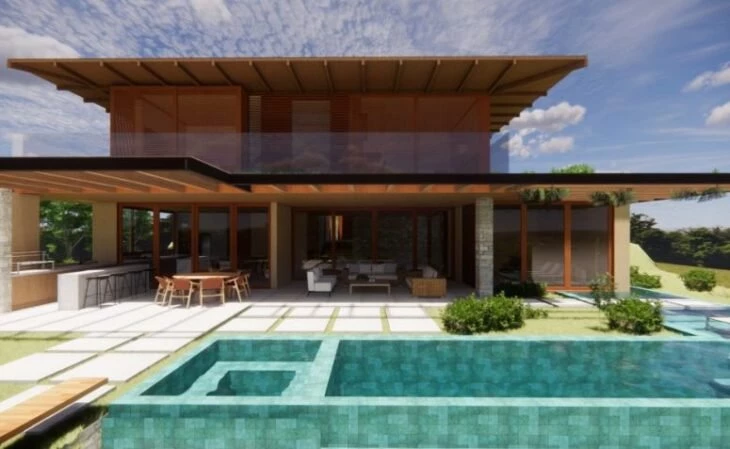
For greater practicality when parking or removing the boat from the covered area, a concrete floor was installed, to prevent the user from slipping or the winch from skidding when the ground is wet. Practical, simple, and economical.
6. perfect choice for the wet area
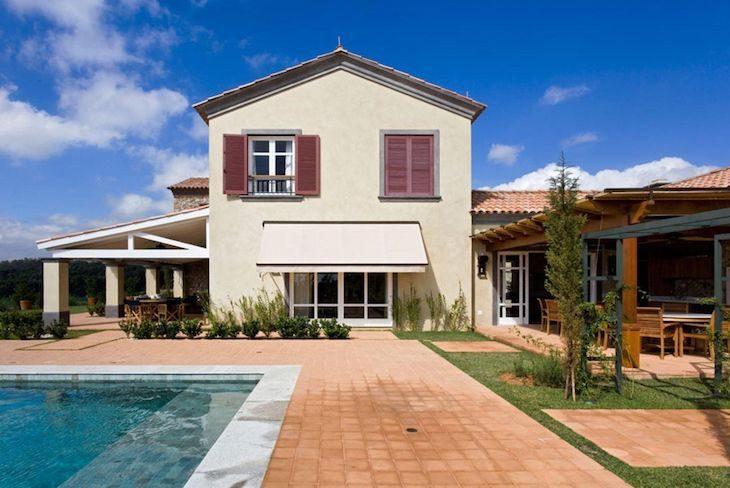
The installation of the square floor in the terracotta version gave more prominence to the pool and the path to the covered leisure area, while still leaving guaranteed space to receive the lawn and some plants.
7. internal sidewalk with shades of gray
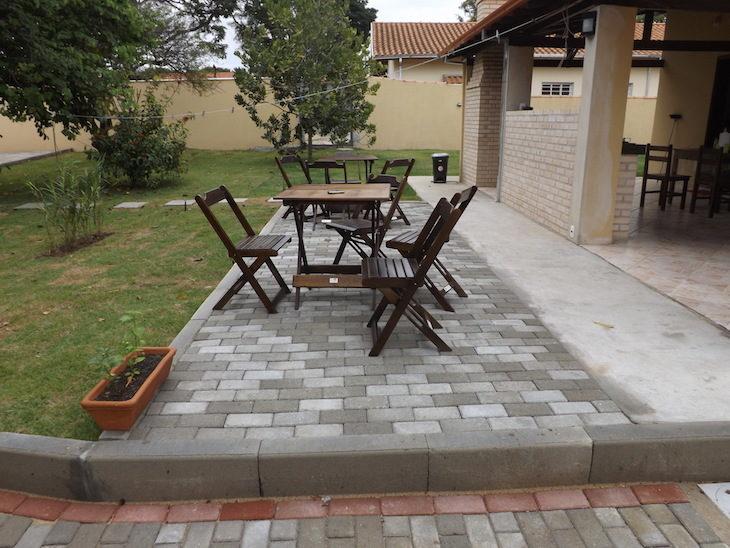
Although simple, the installation of interlocked floors is completely handmade, which can make the job a little more laborious. For a perfect result, it is necessary to level the ground.
8. interlocking floor + deck
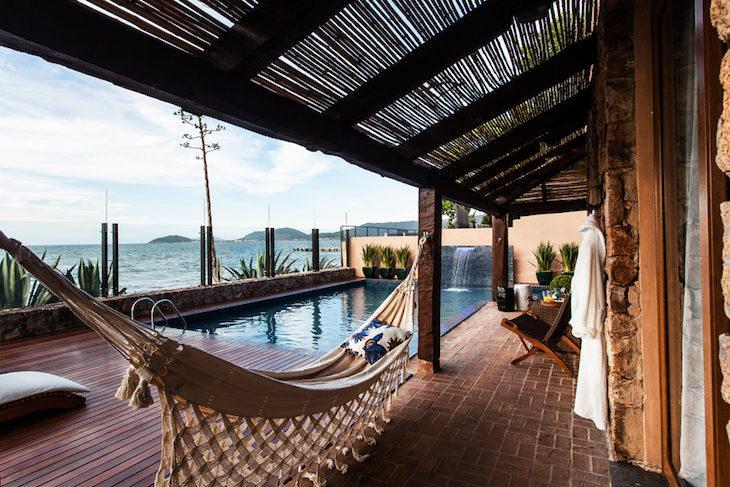
When laying, the floors are joined together by fine sand. A vibrating plate is responsible for filling the joints between the pieces, giving the perfect sealing effect between them.
9. combined with the small stone path

This technique is called interlocked flooring because the pieces lock together when they are laid. Although they are commonly used for sidewalks and squares, they offer an incredible look for backyards, garages, and leisure areas.
10. creating a track
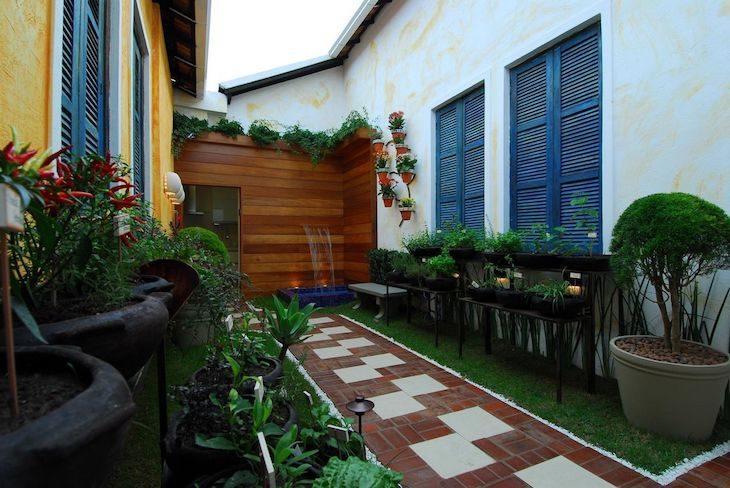
If the idea is to include in your project a more resistant material for the external area, the interlocked floor is the solution. They are much more durable than other materials and their maintenance is very practical.
11. zig zag
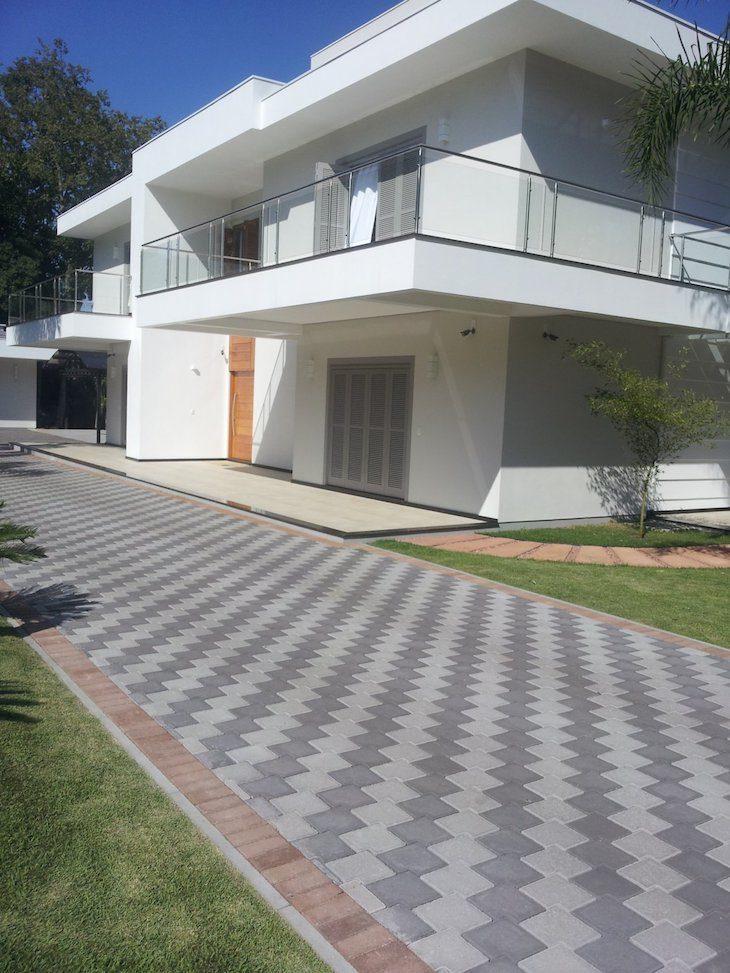
While the porosity of the floor creates a natural non-slip layer, some models even allow the ground to absorb rainwater, due to its permeability.
12. ensuring practicality
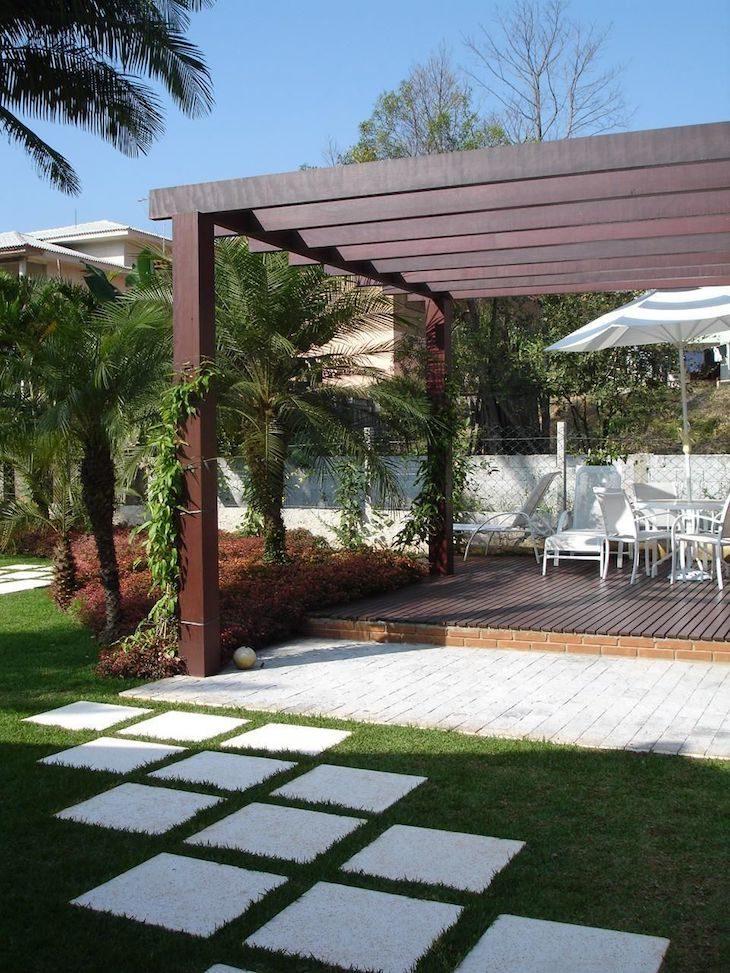
Cleaning this material is practical and simple. A high-pressure washer is sufficient, or a broom with stiff bristles and specific products for cleaning stone and concrete.
13. limiting the spaces
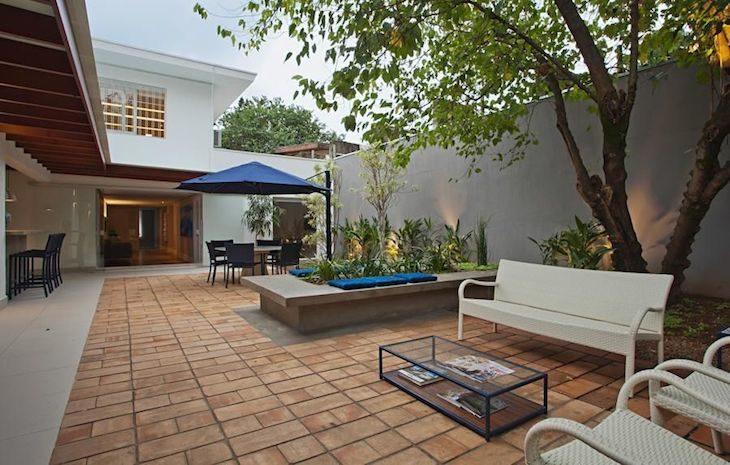
The outdoor area composed of tables, benches, and even a coffee table was properly demarcated by the technique, as if it were a large carpet in an open-air living room.
14. making up the sidewalk of the house
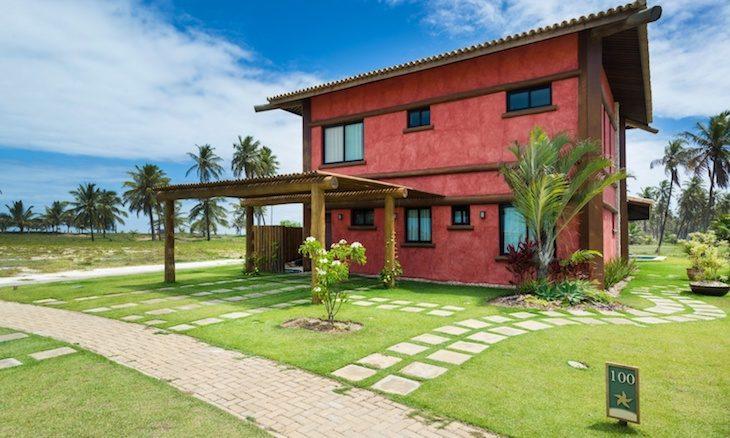
For this beautiful rustic house, a simple sidewalk was included in the design of the outdoor area with the floor tiles installed with vertical and horizontal interleaving. Only those who have no sense to step on the grass here!
15. combined with the facade composition
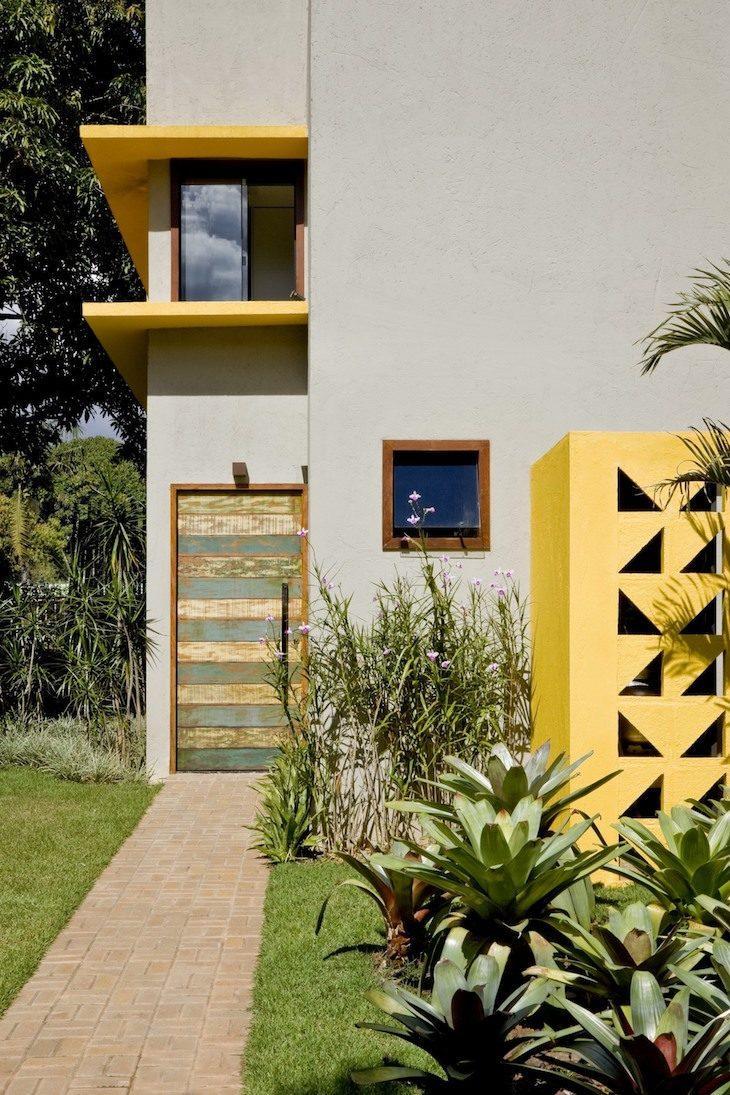
The path to the entrance of this fun property was also demarcated with the technique, this time with double rectangular floor tiles: two vertically, two horizontally.
16. ideal for car entry
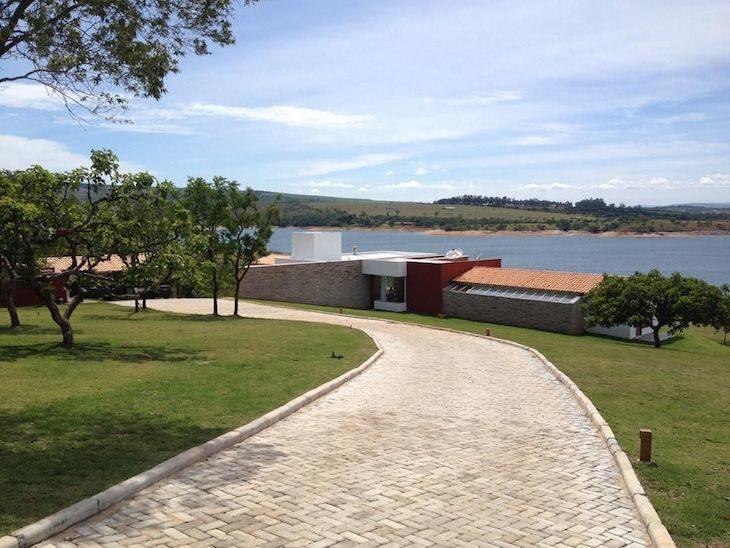
Interlocked floors are a great solution for uneven terrain. Safe climbing for cars and pedestrians is guaranteed, especially on rainy days.
17. other materials can be used for the same technique

If the idea is to have a more refined result, it is possible to use the same installation technique with other materials.
18. charming backyard
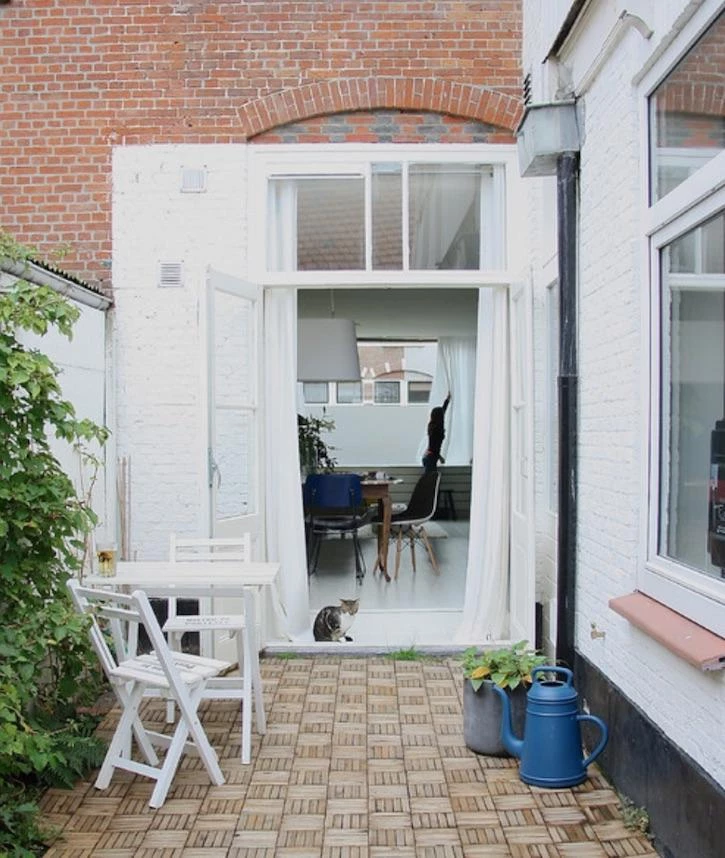
The outdoor corridor of the house became much more charming with the cozy ambiance. The marriage between the floor and the white brick wall guaranteed the simplicity of the space, and the little plants added more personality and comfort.
19. half and half
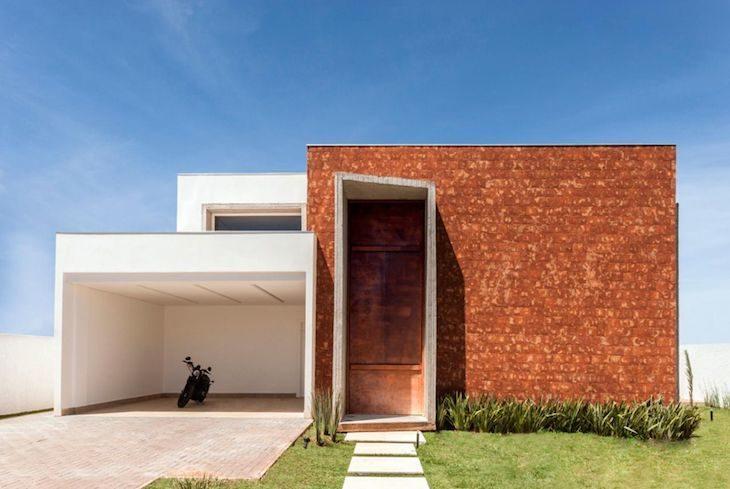
Look how this modern house has a clever solution: on one side a beautiful green lawn, going all the way around the side of the property, and on the other, a sidewalk all paved with interlocked flooring to facilitate the entrance of cars into the garage.
20. mixing the colors

To ensure the charm of the front garden, the rectangular floors were installed irregularly, both in their laying and in the color composition. The main color chosen was terracotta, but a few pieces in natural color and lead gray gave a purposefully aged look to the final result.
21. non-slip entrance
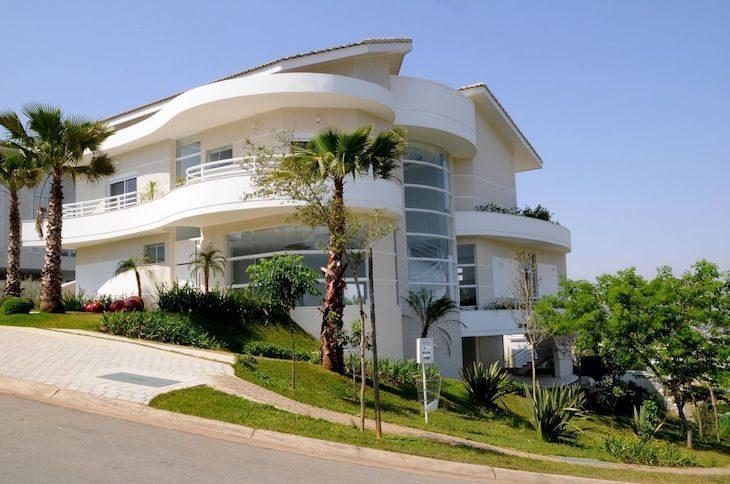
Once again, the interlocked sidewalk was used in a functional way, serving as paving for the entrance to the house on a sloping terrain. To match the clean style of the facade, the pieces were chosen in their natural color.
22. allowing soil permeabilization
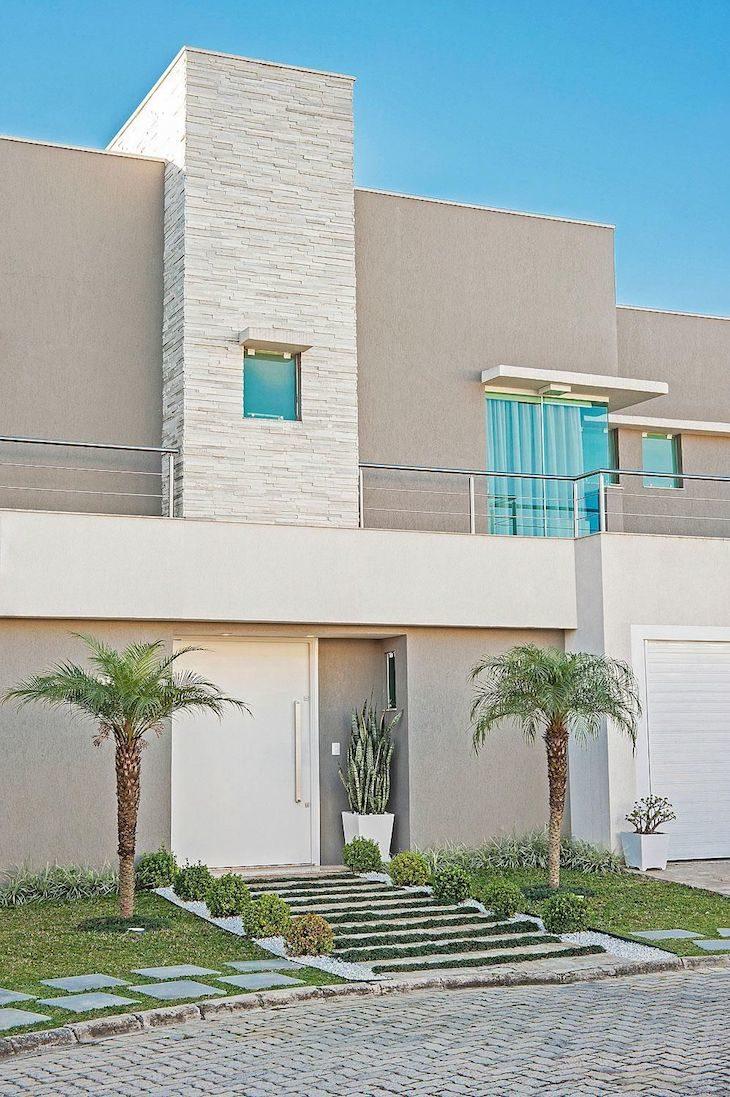
Models with 16 faces are interlocking like a jigsaw puzzle. It is one of the most popular models in this technique, and is used for various purposes, even as paving for squares and parking lots.
23. the perfect exit for busy locations
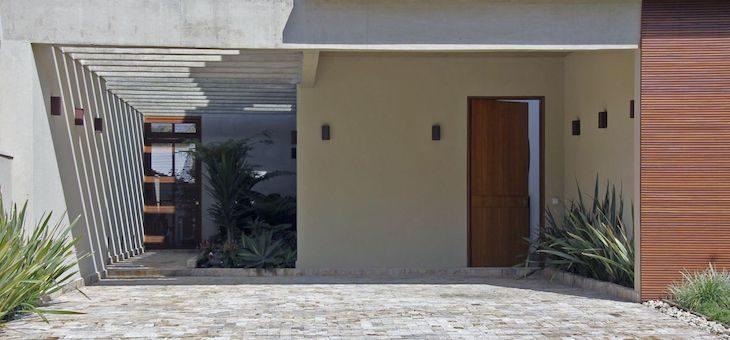
Despite being a manual technique with a high labor cost, the interlocked floor is still the most economical way to cover external areas, because the materials required are very low cost.
24. creative and luxurious production
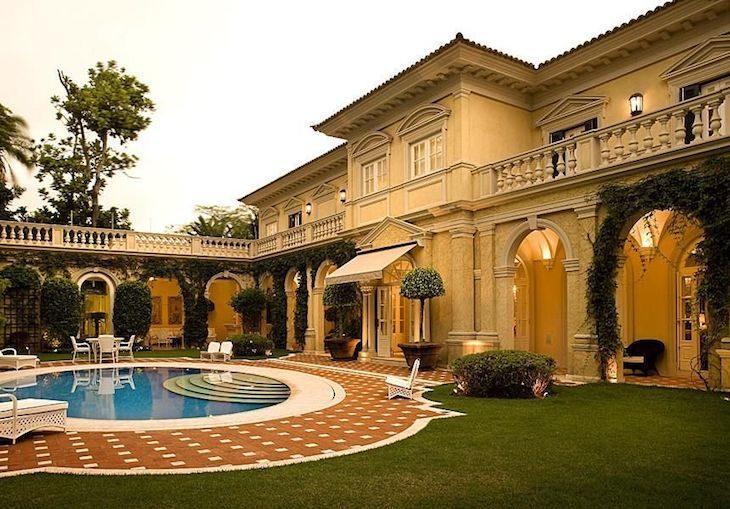
See how the use of this simple floor doesn't necessarily have to have a rudimentary result. The outline of the pool with terracotta pieces gained white details in specific points and also in its outline, forming a classic and luxurious frame.
25. guaranteed resistance
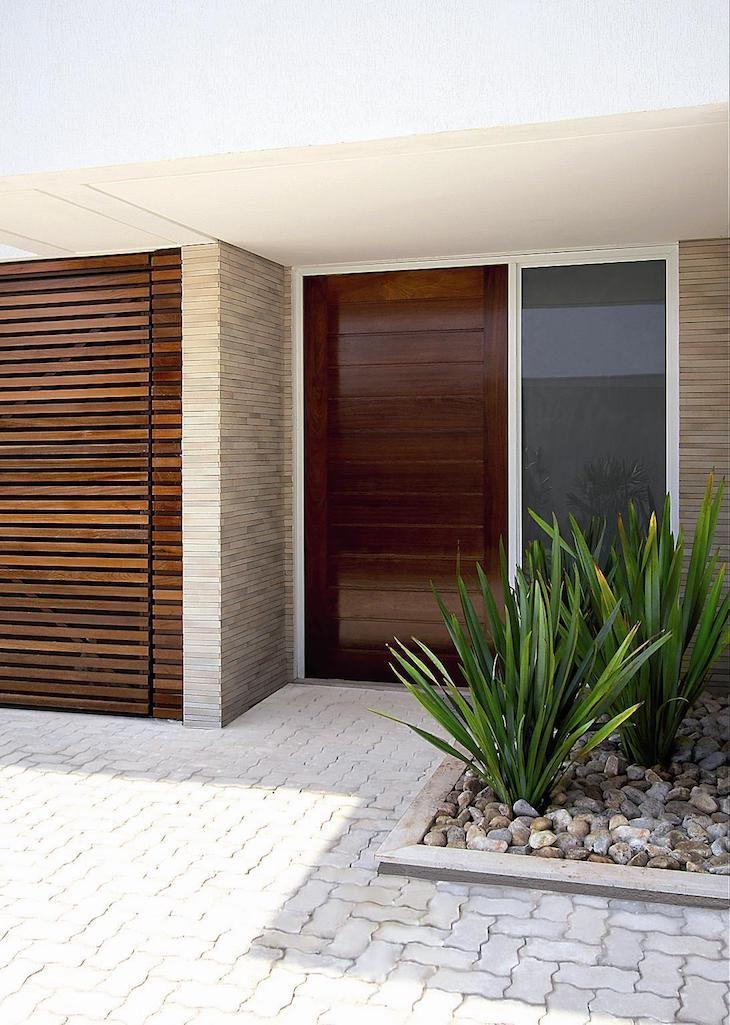
This type of paving may go by several names: paving stones, drainage stones, pavers... but the truth is that it is the best substitute for the old cobblestones, because it is highly sustainable.
26. ecological paving
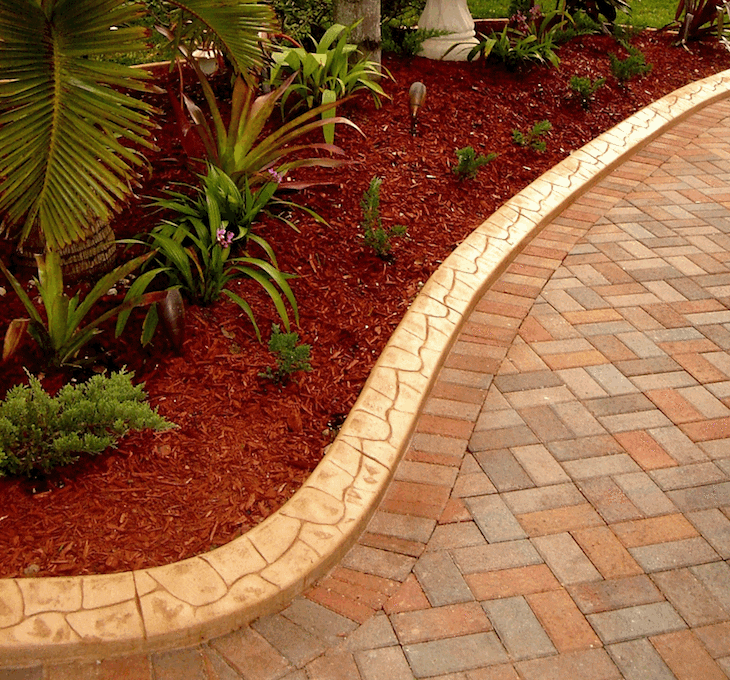
The reduction of negative effects on the soil is the main characteristic of this material, since water infiltration allows the soil not to become impermeable, avoiding several problems characteristic of urban areas, such as flooding.
27. creative forms
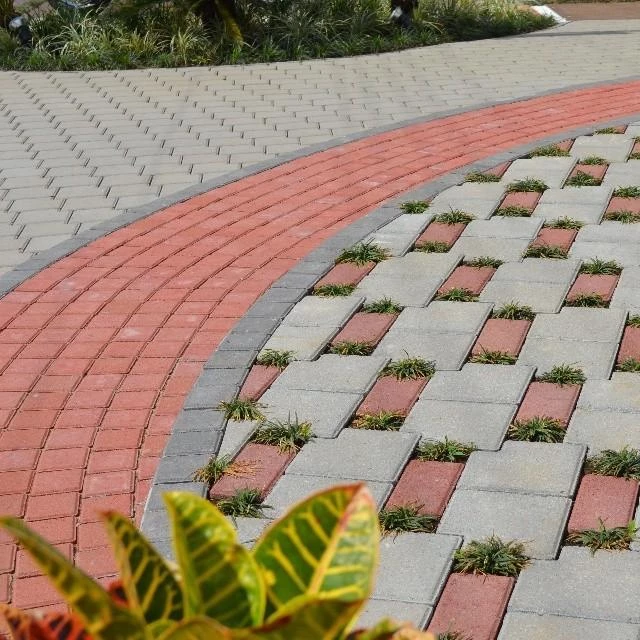
Drainage parts are usually economical in many ways, not only because the material is inexpensive, but also because the parts can be reused without curing time, as they can be taken out and put back in without much effort or breakage.
28. landscaping enhancing the space
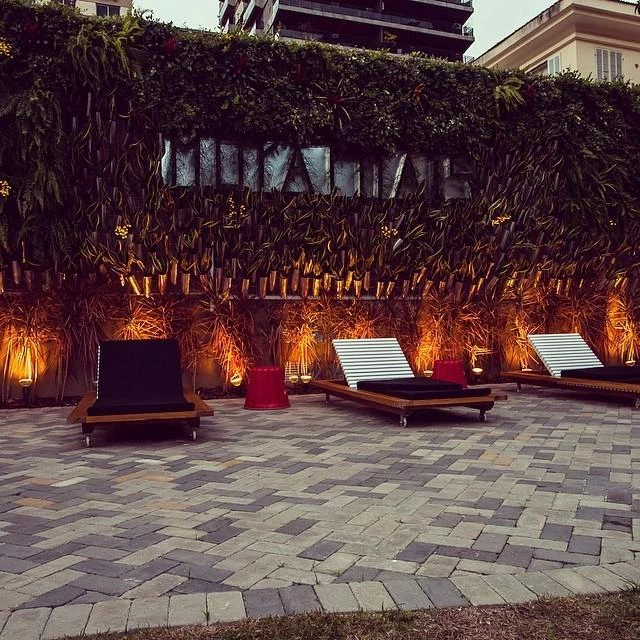
Even with the simplicity of its paving, the external area of this project gained a huge luxurious highlight with the right choices in its decoration and landscaping.
29. shades of red
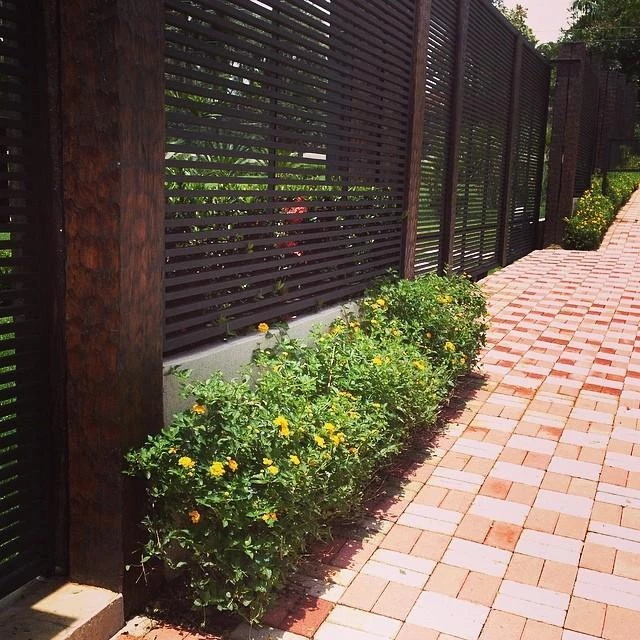
To prevent the blocks from slipping the first time it rains, it is also necessary to install containment pieces along the entire side when laying. In addition, the final finish is much more refined.
30. charming and uncluttered effect

The professional responsible for the paving must always take into account what the purpose of the flooring will be: whether the sidewalk will receive heavy loads or only serve as a passage for pedestrians. This is how he will define if the pieces used in the project will be 60, 80, 100, or 120mm thick.
31. fish scale
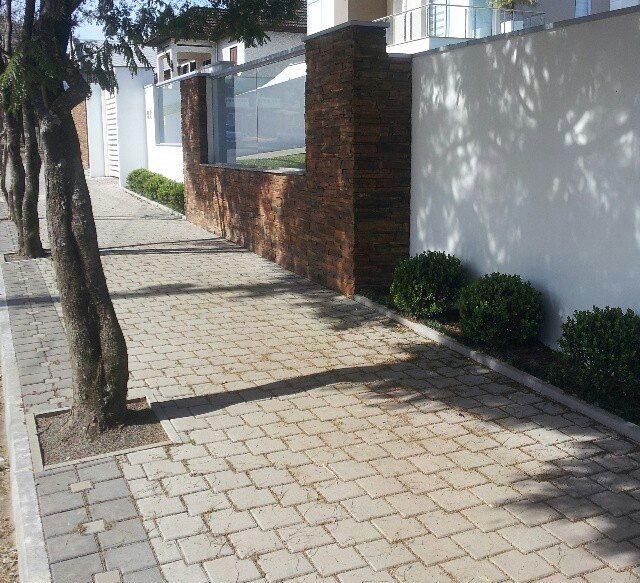
The laying of the tracks can be composed in a creative way, because there are different formats of pieces available in the market. But for better durability, the installation most indicated by specialists is in the fishbone or brick-like format.
To know the technical norms for laying with interlocked floors, access the PDE-Brasil (Business Development Program for the Concrete Artefacts Industry) site. This way you can guarantee that your investment will have durability and a guaranteed good result.



